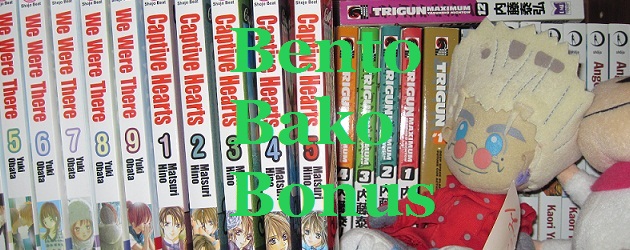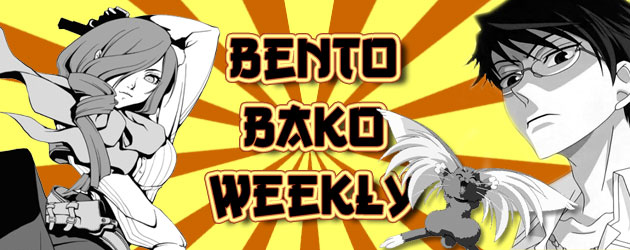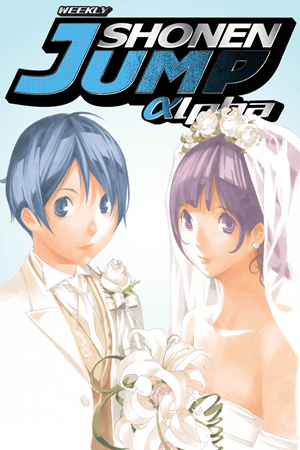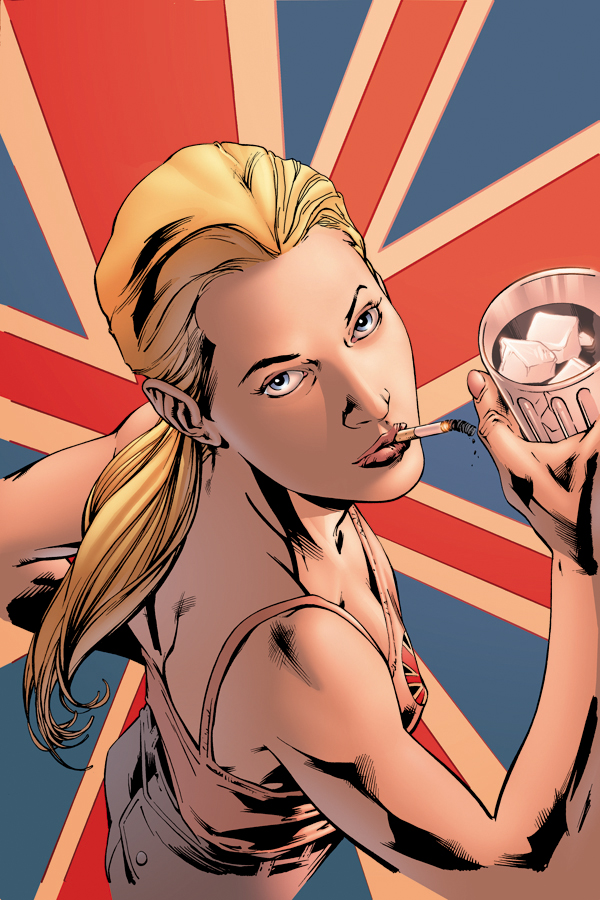I have a special treat for you guys this week! UDON Entertainment, the publisher who brings us amazing video game art books and comics like Street Fighter, gave me the privilege of joining a blog tour to promote their Manga Classics line. I examined the line previously when they released their excellent adaptation of Les Miserables, and I’m happy to be getting an inside look straight from editor Stacy King. If you’d like a chance to win a copy of one of the Manga Classics books, stop by The Book Lovers’ Nest. A review of Emma (Jane Austen, who has been a popular author to adapt in this line) can be found on Anime Diet (and I’ll do one soon myself), and another can be found at No Flying No Tights.
I hope you enjoy this interview with editor Stacy King, and it prompts you to check out some of the Manga Classics books!
ComicAttack: From an academic standpoint would you view the Manga Classics line as an alternative, supplement, or in general just a new way to get a younger or new audience exposed to literary classics?
Stacy King: Manga Classics can definitely be read on their own for general interest, and we’ve had a number of younger readers who have enjoyed them as a first-step into the world of classic literature. In an academic setting, we think of them as a supplement rather than a replacement. They’re a great way for more visual learners to first encounter these books, and can help get readers excited about the story and characters. Manga Classics are a great option for the kinds of students who would otherwise seek out a film adaptation, since they will still be developing their prose skills and improving their reading confidence, but with a visual component to help keep them engaged.
CA: Based on feedback from schools, libraries, and fans, would you say the line has been successful in introducing these titles to people who may otherwise never have read the books?
SK: Absolutely! One of the most common responses we get from readers is that the manga adaptation has inspired them to read the original novel as well, which is great to hear.
CA: Are you able to pick (or have influence on) which titles are chosen as part of the Manga Classics line?
SK: Only a little! We have a consultation team of librarians and educators who have offered us advice on developing the line, including which titles would be most useful to have in a school setting. Their input is the major deciding factor, although I’ve been lucky enough to love all the books we’ve been working on so far.
CA: What has been your favorite title to work on so far?
SK: PRIDE AND PREJUDICE, definitely – I love Jane Austen and it’s such an iconic book, with marvelous scenes and unforgettable characters, that made it a real delight to work on. That said, we’re working on THE COUNT OF MONTE CRISTO for a 2016 release, so my answer may change once that’s done!

CA: Do you have a favorite classic author (or specific book) you would like to interpret through Manga Classics (that isn’t already part of the future line up)?
SK: I’ve been making noises about doing a DRACULA adaptation since we started working on the Manga Classics line: there are some wonderful visuals in Bram Stoker’s writing that I think would work fantastically in a manga format!
CA: When adapting the books, how much of the novel’s original dialog is placed into the manga?
SK: As much as possible, based on the needs of the scene. We think it’s important for readers to not only understand the plot, characters and setting from our books, but to also get a feel for how the author works with language. Ideally, there should be enough text (in both dialogue and narration) that a reader will be accustomed to the author’s style of writing by the time they’re done with the manga, but not so much that it interferes with the visual storytelling. It’s a tricky balance to maintain!
CA: When deciding what scenes or elements make the cut into the manga, what’s the priority? (Fan favorite moments, major character moments, minor characters that might not make the cut, etc.)
SK: There’s no one specific guideline, although we do refer quite a lot to academic materials to get a sense of the key elements of the novel from an educational perspective. We ask ourselves, “What will teachers need to see included to feel comfortable using this book as a resource in the classroom?” and build from there. That said, we do our best to keep in all those really iconic moments from the book.
CA: Do you read (or reread) the novels before working on the associated adaptations? Does the assigned writer, or the artist?
SK: Absolutely, yes! Most of the artists aren’t native English speakers, so we usually track down good translations for them to read through. Reading the original novel is probably the easiest and most enjoyable part of my job, even though I need to take notes throughout the process. I mean, I’m an English Language major who gets to read classic literature for a living! It doesn’t get any better than that.
CA: When searching for artists, what are you looking for? (A particular style, strength in drawing period clothing, etc.)
SK: On the art side, UDON has partnered with Morpheus Publishing, which is an Asian art studio with extensive experience in producing manga for the Japanese and Chinese markets. Their team tends to be fairly versatile, so part of what we’re looking for is actually the artist’s own interest in and connection to the story. 300 pages is a lot of artwork to produce, so it needs to be something that they will be excited to work on! We’ve been really fortunate so far to connect artists with projects that they’re both enthusiastic about and which suit their art styles.
CA: How successful has the Manga Classics line been for UDON?
SK: We’ve been thrilled with the reception that the Manga Classics books have been getting so far! The feedback we’re getting from teachers, librarians and most importantly readers has been great, with most of the books sitting in the 4-star range on Goodreads. We’d like to be able to build the line even more, so we’re working hard to spread the word and get the books into as many stores as possible.
CA: Has it proved difficult to manage the pacing when condensing long novels to much shorter manga?
SK: Figuring out the pacing is definitely among the hardest parts of doing an adaptation like this! Usually the writer works with the original novel to develop an outline of all the key scenes that need to be included, then prepares a breakdown which estimates how many pages will be devoted to each scene. That needs to consider not just the dialogue and action, but also visual storytelling. Manga puts a lot of emphasis on character emotions and it’s crucial to include enough “breathing time” in the pacing for readers to really delve into those big emotional moments.
 CA: With your love for historical costuming, is there a particular outfit that has been drawn in any of the Manga Classics books that you would love to recreate?
CA: With your love for historical costuming, is there a particular outfit that has been drawn in any of the Manga Classics books that you would love to recreate?
SK: Ooooh, great question! I lean towards the Victorian era when it comes to my historical costuming work, although you can’t beat those Austen-inspired Regency dresses for comfort. I’m very fond of the pink dress that Elizabeth Bennet wears on the hardcover edition of PRIDE AND PREJUDICE; that one would be very fun to recreate!
CA: Conversely, is there a title or character (already published, or something you’d like to publish in the future) whose clothes you would enjoy designing for the manga?
SK: The artist is generally the one designing the character’s clothing, based on the historical research they’ve done to prepare for the project. That said, if we ever get around to doing DRACULA, I have a whole bunch of ideas for Mina’s wardrobe…
CA: The Count of Monte Cristo is going to be a monster to tackle, but then so was Les Miserables. I’d love to see a Tale of Two Cities adaptation, and I’m with you on Dracula, as well. (And Frankenstein! Maybe some Shakespeare!) Is there an era or date cut off for this line of books? (IE: Can you go back as far as, say, the Odyssey, and how recent would a title not be considered a “classic” for adaptation?)
SK: There’s no fixed timeline that we have in mind, although we’re generally looking at titles that are in the public domain – we want to build the line before we start looking at more recent books, since that would involve licensing fees, author approvals and other complicated factors. To start with, we’ve been looking at books that are part of the Core Curriculum for U.S. high schools or on Required Reading lists for those students, but that still gives us a lot of options!
CA: What would be your pitch to convince someone to pick up one of the Manga Classics titles?
SK: Manga Classics are a great new way to enjoy timeless stories, whether you’re new to the classics, a dedicated reader looking for a lighter approach to your favorite works, or a romance fan who appreciates seeing your beloved heroes and heroines brought to life!
__________________________________
Thank you to Stacy King and UDON!
Kris
kristin@comicattack.net
@girlg33k_kris






